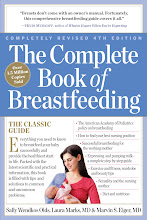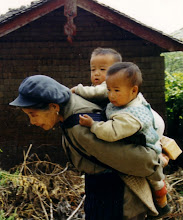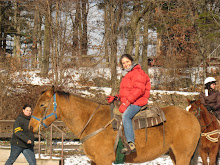So many people commented that they were helped by my article about avoiding falls, which appeared in www.NYCityWoman.com, the free online magazine for women "on the right side of 50" (as its editor puts it) that I'm reprinting it here. I hope it keeps more of us grannies upright and out of the emergency room!
Improve Your Balance and Avoid Needless Falls
Some remedies only require common sense; others require classes in balance and tai chi.
by Sally Wendkos Olds
In my circle of friends, practically everyone—including me—has fallen recently. One friend hit the floor when the chair she was standing on to reach a high cabinet tipped over. One tripped over a small rug in her apartment. One tumbled downstairs when, wearing her progressive lenses, she could not see the bottom of the staircase. I ended up spread-eagled on a sidewalk when, looking up at the marquee of the theater I was headed to, I caught my toe in a crack in the cement. The ways we fall are varied and the ways to prevent falls are also varied. As we get older our vision changes and our muscles become weaker; these may cause changes in our balance, our bones and our ability to judge distances. Fortunately, we can do a lot to prevent mishaps.
“Reaching your sixties should be a wake-up call,” says Celeste Carlucci, a former dancer and the founder of the fall prevention and strengthening program FallStop…Move Strong™ at the Westside Jewish Community Center. Of course, younger people fall too, but the risks can be greater for people 60 and older. Many of us need to make changes. As much as we may want to look fashionable, we should wear sneakers (See Sneaker Savvy for City Living) or low-heeled shoes with rubber soles when we plan to walk four blocks or more. Also eliminate rugs that slip and slide in your apartment, learn better ways of picking up items from the floor and placing items on high shelves. Make sure your lighting is good.
Some of these remedies only require common sense, but improving our balance and way of moving sometimes requires physical therapy or classes in balance or tai chi. The stronger our muscles become and the more our sense of balance improves, the more adept we will become at catching ourselves if we trip or if someone bumps into us. Listed below is a compendium of recommendations from several experts.
Pay attention to your body: To decide if you need a class to improve your balance and strength, try the exercises in the sidebar and grade yourself honestly. If you sometimes feel dizzy or unsteady, have your doctor check you and analyze all your medications (including over-the-counter) to see whether any one of these or any combination is causing the problem.
Check your vision and ears: If you experience any dizziness when you walk, go to your eye doctor or ear doctor to make sure your glasses are appropriate and you don’t have an ear infection.
Wear shoes that give you good support: As you age the skin on the bottom of your feet becomes thinner and walking distances may become painful. You can buy inserts for sneakers and low-heeled shoes at many drug stores or see a podiatrist who can order custom-made orthotics and fit you with the right shoes.
Since most falls happen when we shift our weight and lose our balance, focus on keeping your body weight over your feet, especially when changing direction.
To pick up an item from the floor, bend your front leg, keep your rear leg about a foot behind the other, and bend down. You’re less likely to fall than if you bend over with both legs together.
To reach something on a high shelf, take the same stance: one foot forward, one back.
When walking down steps, if you’re feeling off balance, place your feet sideways and hold the railing.
When you wake up in the morning or after sitting for a long time as at the theater, open your lap, organize your body, and, as Celeste says, “pump the gas” for a couple of minutes before getting up by alternately flexing and pointing your feet.
Walking Outside
Consider every walk a mindful meditation, so you’re constantly thinking, “Where are my feet?” “Where is my body?” “What is the road surface like?” When I went trekking a few years ago on the narrow, rocky roads in Nepal, I had to focus on every step. If I wanted to look at the spectacular scenery, I knew I had to stop—I could not walk and look at the same time. We need to do this in New York City as well. As East Sider Myra Braverman told me, “When I walk and talk, I trip. When I just focus on how I’m walking and don’t engage in conversation, I don’t trip.”
Walk heel-toe. Make good contact with the ground by hitting it first with your heel, then your toe, with your legs a little bit apart so you’re not shuffling.
Use your whole leg and body to develop a good stride, but don’t make your steps so large that you lose your balance keeping up with them.
Practice using your STOP muscles: lunge forward, then pull your body back to catch yourself. Make this a habit so that if you trip or suddenly see a bike coming at you, you can pull yourself back.
Standing a foot away from a wall, keep your body straight as you lean forward, with your hands away from the wall. As you come closer to the wall, practice putting your hands on it so the movement will be automatic and if you do trip, you’ll fall on your hands.
Swing your arms when you walk. This can be a challenge on crowded sidewalks, but it’s important to keep your body loose and have an easy gait.
On snowy and icy streets wear boots with rubber soles, engage your abdominal muscles, plant one foot and then the other firmly on the ground, angle your body slightly, and lean forward a little bit so you won’t fall backward.
When walking your dog, keep the leash short and the dog close to you. When you bend down to scoop the poop, place one foot in front of the other so you won’t lose your balance. And keep one foot on the leash so Fido can’t bolt and drag you with him.
Be alert to what’s around you: puddles and potholes, uneven pavement, cyclists coming the wrong way, cars turning into the crosswalk, oblivious smartphone users about to bump into you.
Taking Taxis and Buses
Let the new taxis with high steps pass and wait for one that’s easier to get in and out of. To get in, sit sideways, hold the door frame and swing both legs in at the same time. To get out, do the reverse.
Don’t run for a bus. Instead leave early so you’ll have enough time and won’t be tempted to run. Always exit from the front of the bus, no matter what the recorded voice says, since the front step is lower than the rear. To get in or out, step sideways and hold the railing.
Create a Safe Environment at Home
Check your home against the safety checklist from the Centers for Disease Control.
Light is important. Keep a lamp by your bed with an easy-to-reach switch, and keep a flashlight handy, at home and when traveling, so you never have to walk in the dark.
Inside the house always wear shoes or slippers with a back AND, when possible, rubber soles to give your feet structure and prevent slipping.
Never walk in stocking feet, which are slippery.
Use a sturdy stepladder with a hand rail to reach high places; be sure it’s level before getting on and hold on.
Always keep your cell phone with you so if you do fall you can summon help.
Keep your floors free of clutter you might stumble over.
Enrolling in a class to improve your balance and strength can also bring tremendous benefits. As West Sider Lynn Minton says, “My ankles are stronger, my calves are stronger, my thighs are stronger—my whole body is stronger and more flexible. We all trip—just look at New York City sidewalks—but now I can right myself if I start to trip and I don’t fall down. I’m always recommending Celeste’s classes to friends.”
[Celeste is Celeste Carlucci, who teaches balance and muscle strength classes in NYC and who offers DVDs to follow at home on her website, www.fallstop.net.]
Glitter Leaves
3 months ago



















.jpg)





.jpg)
.jpg)
.jpg)
.jpg)




.jpg)






.jpg)